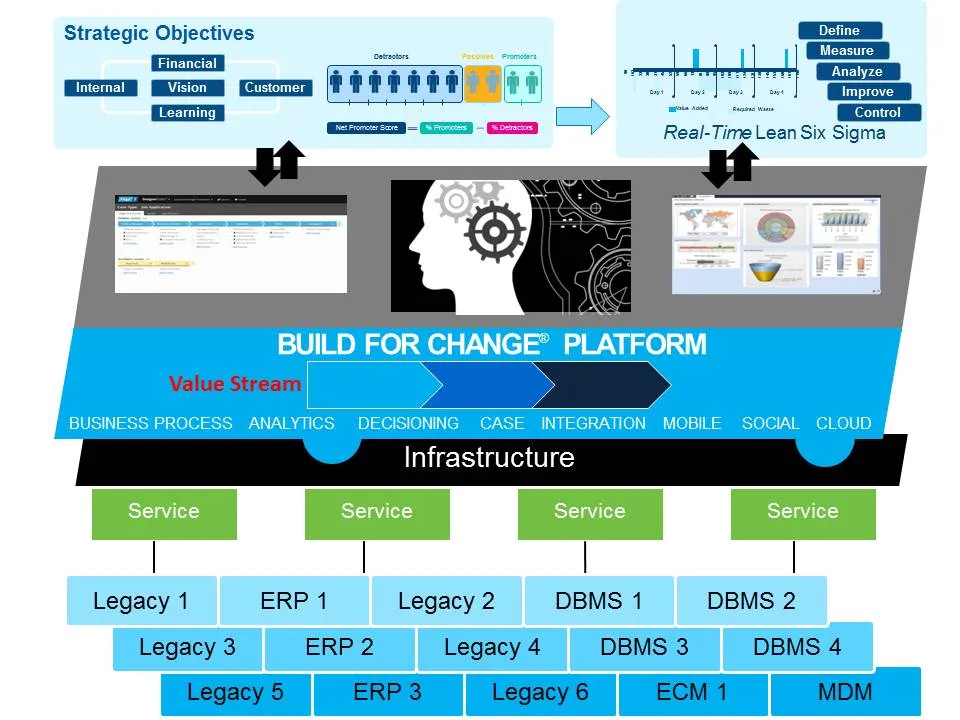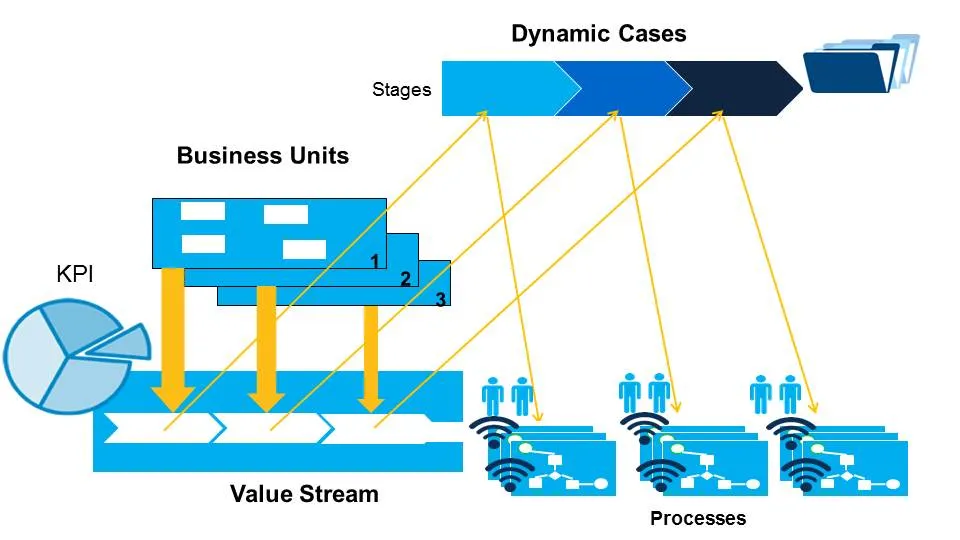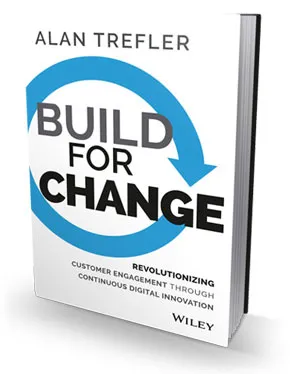The Top 6 Success Factors for Digital Transformation (Part 2 of 2)

In Part 1 of this two-part blog, I highlighted the first three trends of the Top 6 Success Factors for Digital Transformation – 1) Digital Engagement and Legacy Modernization, 2) Empowering Operations, Business and IT, and 3) Digitization through Agile Digital Enterprise Methodologies and Competency Centers. The final three success factors combined with the aforementioned ones support true Digital Transformation.
4. Optimize Process Improvement through Real-Time Lean Six Sigma
Enterprises are faced with several challenges as they attempt to remain viable in the ever-changing climate of digital economies. Real-Time Lean Six Sigma (RTLSS) consists of complimentary methodologies that address efficiency and effectiveness: reducing waste and improving quality of the enterprise. Waste produced during the construction or execution of an innovative solution is avoided while keeping processes in control in real-time. How is this possible? Real-Time Lean Six Sigma means CTX (e.g. critical to quality or critical to cost) measures are mapped onto properties (fields, attributes) in automated applications. RTLSS leverages the Build for Change® platform in its continuous improvement lifecycle. Customer relationships and operations are optimized through guided interactions and straight through processing. Decisioning with strategies for optimized Next-Best-Action achieve RTLSS objectives especially through improving Net Promoter Scores (NPS). IT is optimized through increased productivity and re-use as well as specialization of the assets of enterprise applications. With a Build for Change® platform that includes decision management as well digitization of processes and dynamic cases, IT can simplify and rationalize its many enterprise applications and increase productivity. Businesses also benefit by easily modeling their requirements as well as agility for change and innovation at an accelerated rate. The emergence of digitization has produced a sea of customers with superb expectations in quality of services. RTLSS principles are critical for increasing efficiency in Operations. In terms of the most important digitization trend, the Internet of Everything, RTLSS empowers the “Things” through, for instance, preventive maintenance and elimination of waste via applications that orchestrate “Things” and people in end-to-end automated processes. For more information, check out this content:
- http://www.pega.com/resources/bpm-professor-episode-8-lean-six-sigma-and...
- http://www.pega.com/resources/real-time-lean-six-sigma-for-warranty-clai...
- http://www.pega.com/resources/pw-2013-video-how-the-hartford-is-applying...
- http://www.processofeverything.com
5. Modernized CRM
Customer relationship management (CRM) includes automating sales, marketing, and of course, customer service and support. New CRM applications leverage decision management within automated digitized processes to deliver seamless end-to-end (meaning front to back office with multiple business units aggregated as needed) customer service. Customers are increasingly demanding and highly communicative. This phenomenon is captured very elegantly in Pega CEO Alan Trefler’s book, Build for Change. The characterization of a new generation of customers (Called Gen D – where the “D” stands for Discover, Devour, Demonize) and the corresponding predictions for enterprises that ignore them are dire and to the point. Trefler writes,
“A lot of companies across the globe are going to die over the next few years – not because of macroeconomic stress, but because there is an entire emerging generation of customers who hate doing business with them.”
Customers often share their thoughts and requests through social platforms or inbound interactions. Whether their opinions are addressed directly to the business or not, it is important to immediately analyze and respond to the voice of the customer. Different demanding customers need to be treated differently to optimize the customer lifetime value. It is also important to have consistency (RTLSS objectives) when dealing with sales, marketing, or services for the customer. Likewise, it’s equally important to align the various requests, observations or interactions of the customer in any of the CRM channels (thus omni-channel) through end-to-end digitized processes within the enterprise. CRM thus becomes intelligent through decisioning and process-centricity. Optimized offers and immediate actions need to be taken on behalf of the customer and automated as much as possible in real time. The digital enterprise overall must continuously adapt to realize the potential of the modern, re-vamped CRM that dynamically connects the customer to all the teams, departments or applications that are involved in optimizing the customer experience: end-to-end. If you’re interested in further reading, check out this content:
- http://www.pega.com/customer-relationship-management
- http://www.pega.com/customer-relationship-management-software

6. End-to-End Dynamic Connectivity
The final success factor brings us to the ability for the enterprise to have simplified end-to-end connectivity across their functional units as well as their lines of businesses. There are two important dimensions here. Number one is the speed of tying enterprise Key Performance Indicators (KPIs) (including measures such as (NPS)) to operationalized applications. Second, the underlying milestones for the enterprise need to be achieved collaboratively through dynamic cases that involve end-to-end participation of various teams, functional units and lines of businesses to achieve business results. Connectivity also extends to the digital enterprise’s customers and partners.  Digital Transformation happens through transparency, visibility and control of the value stream. Here is a great and pragmatic way to achieve this: create value streams with stages that need to be executed by different business units, mapped onto stages of Dynamic Cases. The DCM cases are automated through processes involving humans, applications and increasingly the Internet of Things (a.k.a. Process of Everything). The speed by which KPIs and end-to-end value streams are associated with dynamic cases is critical. The subcases of an end-to-end Dynamic Case could be executed by different teams, departments or businesses: all collaborating to provide optimal customer service. This becomes the most compelling and important success factor. It involves the obliteration of siloes within an enterprise as well as across the overall extended enterprise ecosystem. It is the most challenging, yet also the most promising. Here again, the requirement is to have a Build For Change® platform that automates dynamic cases as well as decision making for robust digital enterprise applications. To learn more, check out these assets:
Digital Transformation happens through transparency, visibility and control of the value stream. Here is a great and pragmatic way to achieve this: create value streams with stages that need to be executed by different business units, mapped onto stages of Dynamic Cases. The DCM cases are automated through processes involving humans, applications and increasingly the Internet of Things (a.k.a. Process of Everything). The speed by which KPIs and end-to-end value streams are associated with dynamic cases is critical. The subcases of an end-to-end Dynamic Case could be executed by different teams, departments or businesses: all collaborating to provide optimal customer service. This becomes the most compelling and important success factor. It involves the obliteration of siloes within an enterprise as well as across the overall extended enterprise ecosystem. It is the most challenging, yet also the most promising. Here again, the requirement is to have a Build For Change® platform that automates dynamic cases as well as decision making for robust digital enterprise applications. To learn more, check out these assets:
- http://www.pega.com/community/pega-blog/trend-6-dynamic-case-management-...
- http://www.pega.com/products/case-management
While each factor is significant in and of itself, it is the combination of all six that fosters Digital Transformation.
 |
In Build for Change: Revolutionizing Customer Engagement through Continuous Digital Innovation, Pegasystems Founder & CEO Alan Trefler shares his insight on what organizations can do to serve the next generation of customers and survive the pending "Customerpocalypse". |